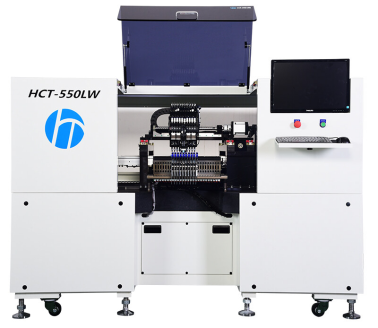E-Mail-Formatfehler
emailCannotEmpty
emailDoesExist
pwdLetterLimtTip
inconsistentPwd
pwdLetterLimtTip
inconsistentPwd


LED Placement Machine: Revolutionizing the Assembly Line
Introduction: The Pulse of Modern Manufacturing
In the intricate dance of modern electronics assembly, precision is paramount. The LED placement machine stands as a pivotal player in this high-tech ballet, choreographing the delicate process of assembling light-emitting diodes (LEDs) with unmatched accuracy. As technology marches forward, the demand for smaller, more efficient electronic components grows, and the LED placement machine is at the forefront of meeting these demands. This blog takes you on an insightful journey into the world of LED placement machines, exploring their critical role in the manufacturing sector and how they are shaping the future of electronics.
The Role of LED Placement Machines
LED placement machines are specialized equipment designed to automate the placement of LEDs and other surface-mounted components onto printed circuit boards (PCBs). They are an essential part of the electronics manufacturing process, ensuring:
High Precision: Precise placement of components to meet the tight tolerances required in modern electronics.
Increased Efficiency: Speeding up the assembly process, reducing production time, and lowering labor costs.
Consistency: Providing uniformity in assembly, which is crucial for maintaining product quality.
Key Features of LED Placement Machines
The capabilities of LED placement machines are defined by several key features:
Placement Speed: The rate at which components can be placed on the PCB, measured in components per hour (CPH).
Accuracy: The machine's ability to place components with minimal deviation from the desired position.
Flexibility: The range of component sizes and types that the machine can handle.
Reliability: The dependability of the machine to operate consistently without failure.
Types of LED Placement Machines
Different types of LED placement machines cater to various production needs:
Manual Placement Machines: Operated by hand, these are typically used for low-volume production or prototyping.
Semi-Automatic Placement Machines: Combine manual operation with automated functions for medium-volume production.
Fully Automatic Placement Machines: Fully automated systems designed for high-volume, high-speed production environments.
Advantages of Using LED Placement Machines
The adoption of LED placement machines offers several compelling advantages:
Improved Productivity: Automated placement reduces the time and effort required for manual assembly.
Enhanced Quality Control: Minimizes human error, leading to higher quality products.
Cost Efficiency: Reduces labor costs and material waste, contributing to overall cost savings.
Scalability: Facilitates easy scaling of production to meet market demands.
Integration with Smart Factory Technologies
The integration of LED placement machines with smart factory technologies is transforming the manufacturing landscape:
Internet of Things (IoT): Allows machines to communicate and share data with other devices on the production line.
Artificial Intelligence (AI): Enables predictive maintenance and optimization of the assembly process.
Robotics: Combines with placement machines to automate other aspects of the assembly process.
Case Studies: LED Placement Machines in Action
Let's examine some scenarios where LED placement machines have proven their worth:
Automotive Industry: Used for assembling LED lights in vehicles, ensuring quality and consistency.
Consumer Electronics: Crucial in the production of smartphones, tablets, and other devices that rely on LEDs for backlighting and indicators.
Medical Equipment: Vital for assembling precision LED components in diagnostic and monitoring equipment.
The Future of LED Placement Machines
As technology continues to evolve, so too will LED placement machines:
Increased Precision: Future machines will offer even greater accuracy in component placement.
Adaptive Technology: Capable of adapting to new component types and sizes without manual retooling.
Sustainability: Incorporating energy-efficient designs and materials to reduce the environmental impact.
Conclusion: The Beacon of Automation in Electronics Assembly
LED placement machines are not just tools; they are the driving force behind the efficiency and precision of electronics assembly. As we venture further into an era defined by automation and smart manufacturing, these machines will continue to play a critical role in the production of LEDs and other electronic components. By embracing the capabilities of LED placement machines, manufacturers can ensure that their products meet the high standards of quality and performance demanded by today's consumers.

